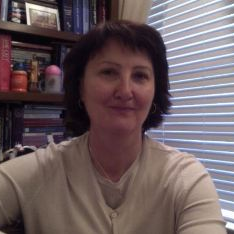Mesenchymal Stem Cells in Tissue Regeneration
A special issue of Bioengineering (ISSN 2306-5354).
Deadline for manuscript submissions: closed (30 June 2019) | Viewed by 39181
Special Issue Editors
Interests: regenerative medicine; stem cells; biological scaffolds; bioreactors; biomaterials; biocompatibility
Interests: mitral valve tissue engineering
Special Issue Information
Dear Colleagues,
Tissue regeneration is slowly becoming a new cornerstone for the medicine of the future. Loosely defined, this field encompasses efforts to integrate the various areas of medical physiology with stem cell biology and engineering for the sole purpose of restoring tissues which otherwise do not have the natural capacity to regenerate.
One major challenge in tissue regeneration is cell sourcing. Among the different options, mesencymal stem cells (MSCs) have been tested in a variety of in vitro, preclinical and clinical scenarios. MSCs are an attractive cell source because they can be readily obtained from patients (autologous) or healthy volunteers (allogenic); in vitro MSCs are easily propagated and manipulated. MSCs have multiple functions, and research into harnessing these capabilities revealed that MSCs are self-propagating cytokine factories also capable of differentiation into a variety of target cells. Despite initial enthusiasm, scientists are still pondering the advantages and limitations of MSCs, use of autologous versus allogenic MSCs, their ability to support tissue regeneration in vitro and in vivo, their true potential for differentiation, their phenotypic stability after differentiation, effectiveness of MSCs collected from patients affected by genetic or metabolic diseases. We also do not understand well enough what kind of scaffolds MSCs actually need, if at all, and what is the effect of synthetic or natural 3D scaffolds on MSC behavior. Thus it is apparent that opportunities for tissue regeneration abound, however in most applications, tissue regeneration is not a “one size fits all” type of therapy.
This is an exciting field which also comes with ample challenges related to the patient’s medical condition and age, metabolic or genetic deficiencies, as well as technical challenges associated with lack of adequate scaffold biomechanics, insufficient vascularity, vulnerability of stem cells, inefficient seeding methods, lack of sophisticated bioreactors and imperfect animal models, among others.
The current Special Issue provides a platform for dissemination and critical evaluation of opportunities and challenges in tissue regeneration using MSCs. It is our belief that your valuable contributions will help advance the field further by providing novel opportunities, approaches and solutions to these challenges.
We are very excited to serve as Guest Editors for this Special Issue and look forward to receiving your manuscripts.
Prof. Dr. Dan Simionescu
Dr. Christopher deBorde
Dr. Agneta Simionescu
Guest Editors
Manuscript Submission Information
Manuscripts should be submitted online at www.mdpi.com by registering and logging in to this website. Once you are registered, click here to go to the submission form. Manuscripts can be submitted until the deadline. All submissions that pass pre-check are peer-reviewed. Accepted papers will be published continuously in the journal (as soon as accepted) and will be listed together on the special issue website. Research articles, review articles as well as short communications are invited. For planned papers, a title and short abstract (about 100 words) can be sent to the Editorial Office for announcement on this website.
Submitted manuscripts should not have been published previously, nor be under consideration for publication elsewhere (except conference proceedings papers). All manuscripts are thoroughly refereed through a single-blind peer-review process. A guide for authors and other relevant information for submission of manuscripts is available on the Instructions for Authors page. Bioengineering is an international peer-reviewed open access monthly journal published by MDPI.
Please visit the Instructions for Authors page before submitting a manuscript. The Article Processing Charge (APC) for publication in this open access journal is 2700 CHF (Swiss Francs). Submitted papers should be well formatted and use good English. Authors may use MDPI's English editing service prior to publication or during author revisions.







